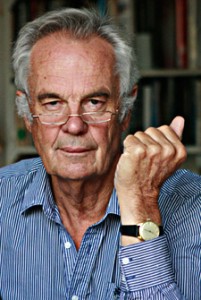Worse world or better world?
By Jonathan Power
War is all over the place. It seems. Not just Syria and Iraq but now inside Pakistan. Not to mention Somalia and Sudan. Yet paradoxically there has never been less war.
Sweden’s Uppsala University Conflict Data program is about to publish its results for 2013. It reports that the number of conflicts in the world increased by one between 2012 and 2013 – pace all the press and TV coverage which sometimes gives the impression that half the world is going up in smoke.
Since the Cold War ended the number of conflicts claiming more than 1,000 deaths has declined by 50%. There were 15 conflicts of this size in the early 1990s. Today there are only seven.
In 2013 six peace agreements were signed – which is two more than the year before.
The number of democratic countries was 69 at the end of the Cold War. Today there are around 120. The number of autocracies has declined in that time from 62 to 48.
The American foreign policy elite appears unaware of these trends. According to a Pew poll, 70% of the influential members of the Council on Foreign Relations believe the world is either as dangerous or more dangerous than it was during the Cold War. This is worrying. In truth neither the US nor Europe are threatened. Nor have they a plausible rival.
The present negotiations on getting rid of any chance that Iran could make use of its potential to build a nuclear weapon are likely to be successful. Iran and the US are cooperating over the civil war in Iraq.
The chances of terrorists getting their hands on nuclear weapons are minimal. At the end of the Cold War many of the Soviet storage sites were poorly guarded. Thanks to US on-site advice that is no longer true. The US has also helped Pakistan put locks on its nuclear devices. Robert Gates, the US Secretary of Defence, said in 2010, “The US is very comfortable with the security of Pakistan’s nuclear weapons.”
The economic and social front is good too.
All over the world life expectancy is climbing steadily. Child mortality has plunged. The rates of polio and malaria are falling steadily. Likewise crime in most countries is markedly down. Despite the economic crash most developing countries, not least African, are growing steadily. The world has never been healthier or safer.
In 1981 half the people in the developing world survived on less than $1.25 a day. Today it is down to to one-sixth.
Nevertheless, despite it being a much better world than it was (despite Iran, Somalia, Sudan and Ukraine), ex-US vice-president, Dick Cheney, has taken to the airwaves to tell us that the world is mostly gloom and doom.
He is denouncing the lack of military toughness by President Barack Obama which for him is the cure for all situations gone awry. (Many of the old Bush/Cheney inner circle have suddenly become TV darlings.) Cheney has what I call “a 1% theory”. He says that there is a “1% chance that Pakistani scientists are helping Al Qaeda build or develop a nuclear weapon”. He argues that the US must treat such a highly remote potential threat “as a certainty in terms of our response”. This is threat inflation writ large.
Some of Al Qaeda may have morphed into ISIS in Syria and Iraq but the original Al Qaeda denounces the Arab upon Arab, Muslim on Muslim killing.
In the decade since 9/11 the US and Europe have not suffered any large-scale terrorist assaults and there is little reason to think they will. Undoubtedly there are some terrorists who would like to but the intelligence and law enforcement agencies are now well up to the task of monitoring them.
The danger with all this right-wing huffing and puffing is that the main challenges are given second place, as its spokesmen try to degrade Obama’s Administration. Too much of the press goes along with it and Obama’s positive poll numbers have declined sharply. The populace is extremely badly informed on the world’s true picture. As Zbigniew Brzezinski told me this ignorance is a real problem.
Instead attention – and resources – should be concentrated on malaria eradication, providing safe water and sewerage, health services and education to all, controlling pandemic diseases, ending the trafficking of women children and transnational criminal networks and fighting climate change.
Even with its recent cuts the US military is far too big. It is a case of the tail wagging the dog. The vast size of the military is a major reason why every challenge is seen as a threat. The military is consuming the resources that should be going on the other foreign policy priorities mentioned above.
Perspective is what is needed. Good times should breed better times. Bad and narrow-minded people see only the worst.
Copyright: Jonathan Power
